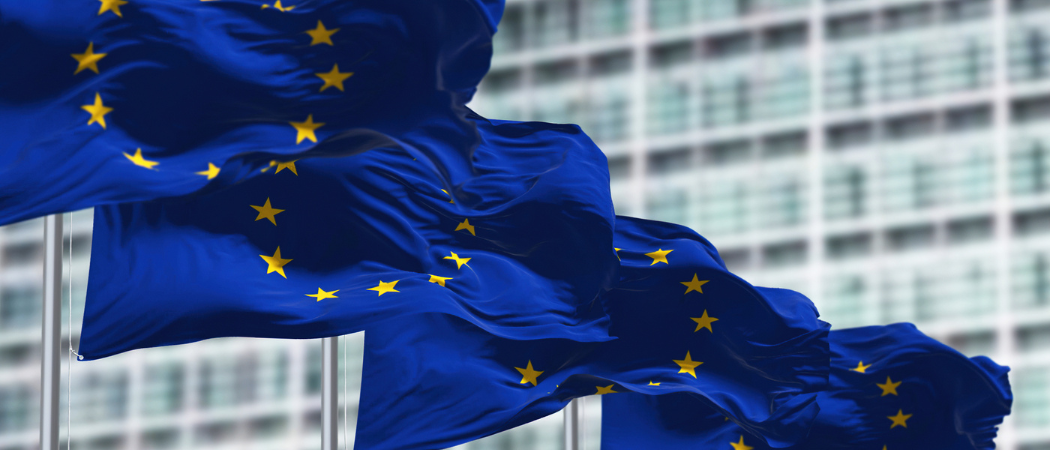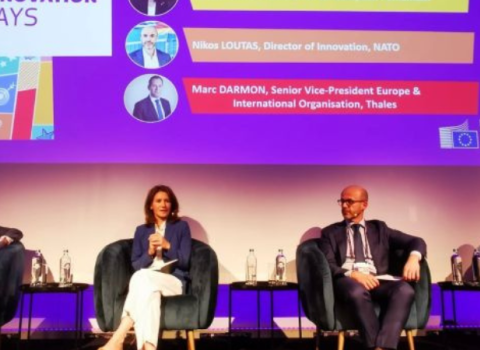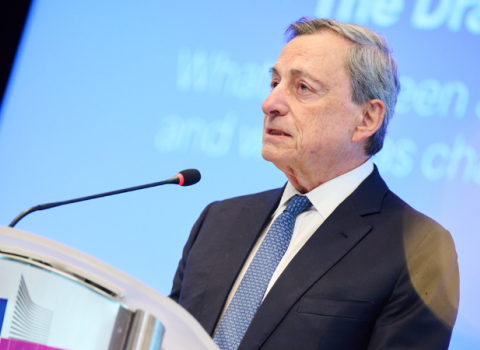Draft documents seen by Science|Business suggest governments want to strike a different balance between basic and applied research, more strategic international cooperation, and better synergy with other funding streams in the next EU research programme

A special member state task force set up to help shape framework programme 10 (FP10), has compiled the first draft of an opinion that is due by June next year.
The documents, seen by Science|Business, set out in broad strokes the member states’ ideas for FP10, including a call for the EU to be a global research and innovation powerhouse by 2034.
“To achieve this vision for 2034, an even more ambitious programme than Horizon Europe is necessary, focused on the most complex challenges and working hand in hand with other sectoral programmes in addressing them,” the document says. “If Europe does not invest adequately in research and innovation and lacks vision, it will ultimately lead to the loss of talent and jobs and affect our quality of life and internal market.”
Much of the draft is a continuation of the principles behind Horizon Europe, including promoting open science, academic freedom, “de-risked” international collaboration and excellent research.
But there are calls for FP10 to better implement synergies with other funding streams, for example EU structural funds, more simplified funding application processes and a better balance between support for fundamental research and close-to-market innovation.
The task force is a part of the European Research Area and Innovation Committee (ERAC) made up of member state representatives and members of the European Commission. The group will meet regularly to put together a report on their vision for FP10, which will be published by June 2024.
In September, various stakeholders were invited to meet the taskforce to share their ideas for FP10. Laura Keustermans, senior policy officer at the League of European Research Universities (LERU), attended the meeting and said in general the atmosphere was constructive.
Mainly, ERAC members invited stakeholders to give their opinions on FP10 without giving much away about their own thoughts. “They were really open to listening to us, they asked additional questions, asked about topics such as synergies, Widening measures, and simplification,” Keustermans said.
Mattias Björnmalm, secretary general of the science and technology universities association Cesaer, says the discussions are currently constructive but are likely to become more difficult when the talks move beyond research policy experts. “We are having these discussions at a high level now, but when senior politicians get involved in the overarching perspectives, it might be more difficult to get all the messages across,” he told Science|Business.
Either way, ERAC’s work is important as it represents the view of the member states, which alongside the European Parliament will have to give the framework programme the final go ahead, noted Bjornmalm.
FP10: revolution or evolution?
There was talk at the September meeting, and more generally in the research and innovation community, about whether the next framework programme needs to be completely overhauled or just modified.
Keustermans has heard talk of both these viewpoints, the so-called question of revolution or evolution.
“I had heard they were looking for a complete blank slate for FP10, but I have also heard people talking more about evolution because for beneficiaries it would take too long to get used to a new programme,” she said. “Continuation is also good because it means simplification.”
The European Commission is currently assembling an expert group (some call it the new Lamy group, after Pascal Lamy who chaired the group that advised the Commission on Horizon Europe), which will give an independent report on what the next framework programme should look like. The group is likely to envision a more radical revamp than the compromise member states will reach in ERAC.
The Commission plans to form the group by the end of 2023 in hopes to have the report ready by the end of next year, a Commission spokeswoman confirmed.
Joep Roet, deputy director at the Netherlands house for Education and Research, said he thinks national ministries are already aware of the issues that are at stake, and they hold a lot of power in the discussions. “Given the nature of the ERAC task force, probably the proposal isn’t going to be the most revolutionary, as compared with stakeholder associations. On the other hand, it is going to be the most influential,” he said.
Roet says Horizon Europe is a major success and doesn’t want to see major change but rather a fine tuning of what already works.
He sees three major challenges for the making of FP10: securing an ambitious enough budget to meet future challenges (many believe this should be upwards of €200 billion), weighing the openness of the programme against strategic autonomy, and finding the balance between policy-driven research and science for the sake of science.
All these areas are explicitly mentioned in the draft ERAC document.
It stresses frequently the importance of building FP10 around the concept of open strategic autonomy, echoing the phrasing used by Commission President Ursula von der Leyen in a speech in March this year when she called for “de-risking” partnerships with China, rather than decoupling.
“Close international cooperation with like-minded countries around the globe that share EU values should remain at the core of the Framework Programme, exploring all forms of cooperation, including association,” the document says.
Björnmalm, like Roet, also does not see a need for a dramatic overhaul of the framework programme. “The conceptualisation of the three pillars helps create an understanding of what a FP can and should do,” he says.
Where a change in culture is needed is synergies, another big topic in ERAC’s draft opinion. Stakeholders want the Commission to be more ambitious. Björnmalm suggests a budget for dedicated R&I activities should be earmarked in each EU funding programme, such as cohesion and agriculture funds. Cesaer called for earmarking around 3% for R&I in each budget. That’s an educated guesstimate of what could work, Björnmalm says.
Keustermans also said more effort should be made to create synergies or bridges between projects funded under the same call of FP10. This used to happen more regularly in framework programmes when the grants were managed by the Commission but has faded away since this work was handed over to external agencies.
Policy vs science
One key question will be how much of the programme should cover targeted research that helps the EU achieve its political priorities. At the September meeting the member state representatives specifically asked stakeholders for their opinion on balancing the need to give a fixed strategy to FP10, while allowing for flexibility.
It’s a two-fold problem. One is how strictly priorities should be defined for the seven-year programme and how much room should be left for emerging priorities – the rise of AI or EU enlargement, for example. The other one is how to balance targeted research for addressing specific challenges and allowing scientists free rein, which in the long run tends to produce knowledge that could address crises politicians could not have anticipated – just think of the fundamental research that enabled the rapid development of COVID-19 vaccines.
The latter is one of the key complaints about the current Horizon Europe research programme. For universities, it’s too focused on closer-to-market research, and they’re struggling to find space for their activities in Pillar 2, the part of the programme that funds big collaborative projects.
Keustermans says universities have been calling for more basic research in Pillar 2 for years and are “convinced that the current increased focus on more medium and advanced R&I activities, is not favourable to finding novel solutions to issues at hand.”
The parts of the programme that fund basic research, such as the European Research Council (ERC) and the Marie Skłodowska-Curie Actions (MSCA), meanwhile, are oversubscribed, with as few as one in ten applicants receiving funding in some calls.
And as crises engulf Europe, the Commission keeps taking slices out of the programme to fund new priorities that spring up, as has been the case with the strategic-autonomy oriented policies like the Chips Act and the Strategic Technologies for Europe Platform (STEP).
It’s a question of scarce resources and the fundamental goal of the programme. With more money, more priorities can be covered without taking resources from others. But a framework programme isn’t meant to tackle every problem that Europe meets. Roet wants a frank discussion on what the fundamental aim of the programme is: addressing political challenges or boosting R&I cooperation.
For Roet, the goal is enabling European science cooperation and stimulating competition. “I think that’s the fundamental added value of the programme. You don’t need to address everything in the programme,” says Roet.
ERAC is diplomatic in its approach. The draft document suggests blue-sky research must be guarded but to ensure flexibility in the programme “different instruments and scenarios could be explored.”
Here, to secure societal support for long-term programming, the authors point to a need to increase the visibility of science and its impact. Research and innovation often take a while to produce impact, which “makes it especially important to set the right framework having both current, future and long-term challenges in mind,” the document says.





 A unique international forum for public research organisations and companies to connect their external engagement with strategic interests around their R&D system.
A unique international forum for public research organisations and companies to connect their external engagement with strategic interests around their R&D system.